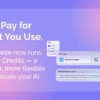What’s New for Developers in Salesforce Summer ’25 Release – Part I
Introduction
The Salesforce Summer ’25 Release is gradually being rolled out to all sandboxes and production orgs from April through June 2025. This update is packed with innovative tools and enhancements for developers, especially those working with Agentforce, Data Cloud, Lightning Web Components (LWC), Apex, and developer APIs. Let’s dive into what’s new and how you can start taking advantage of these features!
🤖 Level Up with Agentforce Enhancements
Salesforce is doubling down on AI-powered experiences, and Agentforce is at the center of it. Developers now have more flexibility to customize intelligent agents, connect them across platforms (like Slack, websites, and third-party apps), and even deploy them programmatically.
💻 Code Your Agents with the New Agentforce SDK
Want to build or manage AI agents using Python? The brand-new Agentforce SDK makes that possible. Install it via pip:
This SDK gives you the power to define agents, manage prompt templates, and map Salesforce data fields — all through code. It supports JSON-based agent specs and comes with example code to help you get started quickly. Check out the GitHub repo for more.
⚙️ Work Locally with Agentforce DX (Beta)
Salesforce DX just got an AI upgrade. With Agentforce DX, developers can now create, test, and manage agents within Salesforce DX projects using familiar tools like Salesforce CLI and VS Code.
You can also install the official VS Code extension for Agentforce.
Here are some helpful CLI commands to streamline your workflow:
🎨 Build UI with Lightning Types and Custom LWCs (Developer Preview)
You can now design interactive, structured UIs for Agentforce using Lightning Types and custom Lightning Web Components (LWCs).
To build your own types, create a LightningTypeBundle with the following components:
Use the following meta configuration in your LWC to expose it as an output renderer for Agentforce:
Below is an example of bringing a user interface using LWCs into Agentforce (Default).
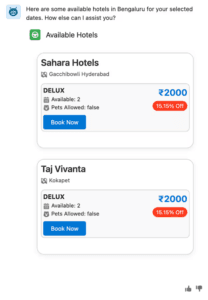
To learn more about building LWCs and LightningTypeBundle, refer to the code examples in the developer documentation. This feature is currently in Developer Preview and available only for agents built using the Agentforce (Default) configuration.
Additionally, you can now view a list of the Lightning types available in your org from the Setup UI. Below is a screenshot that shows the available Lightning types.
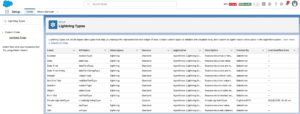
🌐 Adaptive Agent Interactions with Agent Connections (Beta)
Say hello to smarter user interactions! Agent Connections allow Service Agents to deliver rich content experiences through supported surfaces like Slack or websites.
Currently, Agentforce supports two types of adaptive responses:
These features help your agents respond with contextually rich messages depending on the communication channel.
The screenshot below shows how to turn on adaptive response formats in Agent Builder.
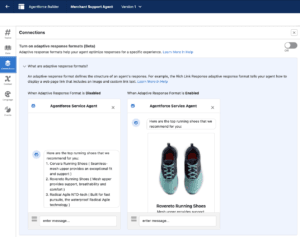
🔗 Prompt Builder Gets External Object Support
The Prompt Builder now supports external objects — so you can bring in large datasets from outside Salesforce without storing them natively.
You can now:
- Choose an external object in a Flex-type prompt template
- Access its fields just like you would for custom or standard objects
This is a game-changer for building intelligent prompts using data from ERPs, data lakes, and other third-party systems.
The screenshot below shows how you can create a Flex template with external objects used for grounding.

🧑💻 Identity + AI = Agentforce for Setup
The new Agent for Setup feature allows you to create and configure external client apps with natural language prompts. Just ask the Agent to build a client app, and it’ll handle the setup process for you. This makes setting up identity flows easier and faster than ever.
The screenshot below shows Agent for Setup in action, helping users create external client apps through a conversational experience.
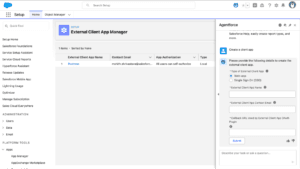
📦 Package Agent Components with 2GP Support
Great news for ISVs! You can now include Agentforce assets — such as actions, topics, and prompt templates — in a Second-Generation Managed Package (2GP).
These packages can be distributed via the AgentExchange, Salesforce’s marketplace for agent-based solutions.
📊 Smarter Related Lists with Data Cloud Enrichments
Salesforce now lets you enrich related lists across standard objects using direct connections with Data Cloud Data Model Objects (DMOs) — and the best part is, you don’t need identity resolution to do it.
What’s new:
- Build related list enrichments for objects like Accounts, Cases, Contracts, and Vehicles using direct-DMO relationships.
- Move enrichments (except direct-DMO) from your Data Cloud sandbox to your CRM production org with deployment support.
Learn more in Salesforce Help.
🔁 Log Flow Executions Straight to Data Cloud
You can now track Flow executions (auto-launched and scheduled types) by logging their run-time data directly to Data Cloud. This gives you powerful, scalable flow analytics across your org.
To enable Flow logging to Data Cloud:
- Open your Flow in Flow Builder
- Click the gear icon → Show Advanced
- Select Install and then Set Up Package
- Enable the Collect setting to log metrics for the Flow
⚠️ Note: This feature consumes Data Cloud credits, so plan your usage accordingly.
The screenshot below shows how to find the installation screen.

Apex enhancements
🧠 Dynamic Formula Parsing in Apex Just Got Easier
Say goodbye to complex string concatenations! Apex now supports template-style formula evaluation using merge syntax like {!FieldName}.
Use the FormulaBuilder.parseAsTemplate() method to build clean, readable formula strings with merge fields.
Here is a simple example code snippet of using the FormulaBuilder class with parseAsTemplate method.

Geoff Minor, President at Global Media
Check the full method reference here.
🛠️ Enable Debug Logs During Metadata Deployments (Optional)
Until now, debug logs were turned off during metadata deployments to maintain performance. In Summer ’25, Salesforce lets you opt-in to enable them org-wide.
How to enable:
- Use Metadata API to update
enableDebugLogsDuringDeploymentunder the ApexSettings metadata type.
This is useful if you’re debugging complex deployments or want complete logging visibility.
🧠 Final Thoughts: Smarter Agents, Cleaner Code, and Scalable Data
The Salesforce Summer ’25 Release is packed with features designed to empower developers — whether you’re building AI agents, crafting dynamic UIs with LWCs, managing complex flow executions, or scaling your data operations with Data Cloud.
With tools like Agentforce SDK, Agentforce DX, and Lightning Types, you now have the flexibility to build and customize intelligent agents across platforms. At the same time, enhancements to Apex, Flow logging, and Data Cloud enrichment give you cleaner, more scalable, and insight-driven solutions for enterprise development.
Salesforce continues to blur the lines between AI, automation, and development agility — and this release is a major leap forward.
🚀 Stay tuned for Part 2, where we’ll cover even more Summer ’25 developer goodness — including Lightning Web Components, SLDS, Flow Testing and Debugging, API Updates, and upgrades to your favorite dev tools like Salesforce CLI and VS Code extensions.





